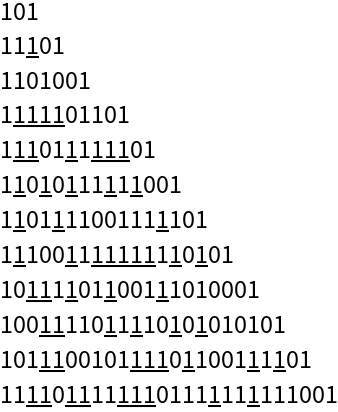Wolfram Function Repository
Instant-use add-on functions for the Wolfram Language
Function Repository Resource:
Convert integers to and from balanced ternary
ResourceFunction["BalancedTernary"][n] toggles the n between integer and balanced ternary format. |
Convert some integers to balanced ternary format:
| In[1]:= |
|
| Out[1]= |
|
Convert the balanced ternary numbers back into integers:
| In[2]:= |
|
| Out[2]= |
|
Large numbers can be converted into balanced ternary:
| In[3]:= |
|
| Out[3]= |

|
Create a random 20-digit balanced ternary number:
| In[4]:= |
|
| Out[4]= |
|
Convert to an integer:
| In[5]:= |
|
| Out[5]= |
|
Using weights of size 1, 3, 9 and 27 and a 2-sided balance, measure weights 1 to 20:
| In[7]:= |
![Grid[Transpose[
Table[With[{l = PadLeft[Normal[ResourceFunction["BalancedTernary"][k]] /.
\!\(\*UnderscriptBox[\(1\), \(_\)]\) -> -1, 4]},
Append[l (3^Range[3, 0, -1]) /. 0 -> "" , k]], {k, 1, 20}]], Frame -> All, Dividers -> {Automatic, {-2 -> {Red, Thick}}}]](https://www.wolframcloud.com/obj/resourcesystem/images/9b6/9b6bdeeb-2379-4e2f-9307-34dadc24679b/143cfaf8f8635212.png)
|
| Out[7]= |

|
This work is licensed under a Creative Commons Attribution 4.0 International License